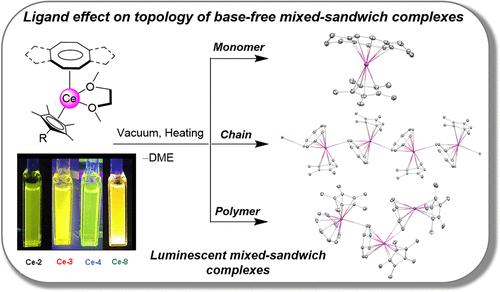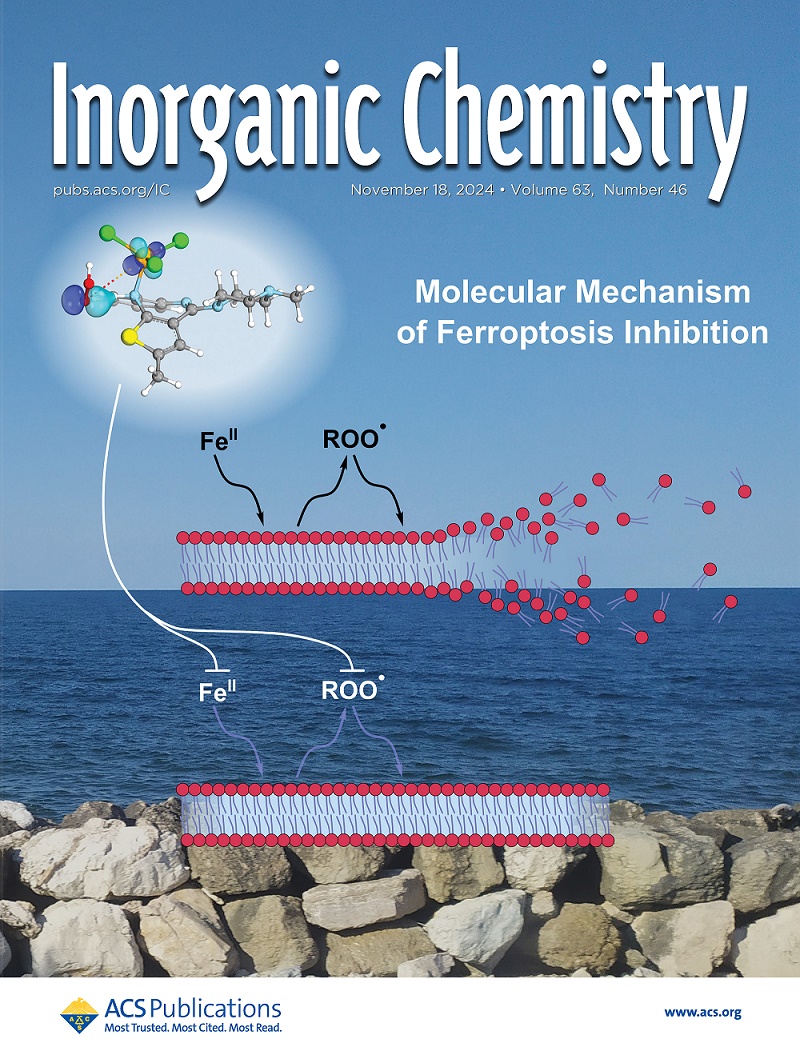Synthesis and Characterization of Solvated and Base-Free Cerium(III) Mixed-Sandwich Complexes
IF 4.3
2区 化学
Q1 CHEMISTRY, INORGANIC & NUCLEAR
引用次数: 0
Abstract
A series of solvated complexes: [(C8H8)Ln(C5Me4R)(DME)] Ln = La, R = −Me; (La-2) Ln = Ce, R = −Me, −SiMe3, −H; (Ce-2, Ce-3, Ce-4), [(dbCOT)Ln(C5Me5)(DME)] (Ln-6), (dbCOT2– = dibenzocyclooctadienide; Ln = Ce, La), [(dbCOT)Ce(C5Me4H)(DME)] (Ce-7) and [(hdcCOT)Ce(C5Me5)(DME)] (Ce-8) (hdcCOT2– = hexahydrodicyclopentacyclooctatetraenide) and base-free mixed-sandwich complexes [(C8H8)Ce(C5Me5)] (Ce-9), [(C8H8)Ce(C5Me4H) (Ce-10) and [(hdcCOT)Ce(C5Me5)] (Ce-11) of the early lanthanide metals cerium and lanthanum comprising variable cyclopentadienide (Cp–) and cyclooctatetraenide (COT2–) ligands is described. To evaluate the effect of cyclopentadienide and cyclooctatetraenide ligands on the characteristics of these complexes, their solid-state structural, electrochemical, and photophysical properties were studied and accompanied by theoretical calculations. To further evaluate the effect of ligands on the topology of the complexes and the reducing properties of the complexes, syntheses of several base-free congeners were pursued, which led to isolation of the first base-free monomeric and polymeric Ce(III) mixed-sandwich compounds.

求助全文
约1分钟内获得全文
求助全文
来源期刊

Inorganic Chemistry
化学-无机化学与核化学
CiteScore
7.60
自引率
13.00%
发文量
1960
审稿时长
1.9 months
期刊介绍:
Inorganic Chemistry publishes fundamental studies in all phases of inorganic chemistry. Coverage includes experimental and theoretical reports on quantitative studies of structure and thermodynamics, kinetics, mechanisms of inorganic reactions, bioinorganic chemistry, and relevant aspects of organometallic chemistry, solid-state phenomena, and chemical bonding theory. Emphasis is placed on the synthesis, structure, thermodynamics, reactivity, spectroscopy, and bonding properties of significant new and known compounds.
 求助内容:
求助内容: 应助结果提醒方式:
应助结果提醒方式:


